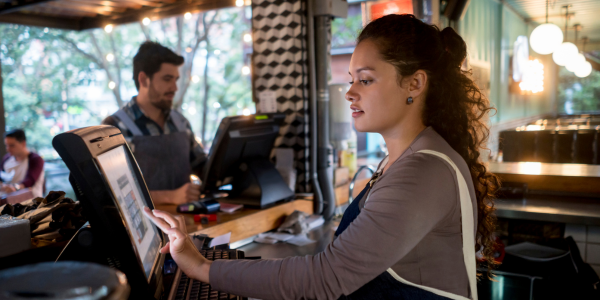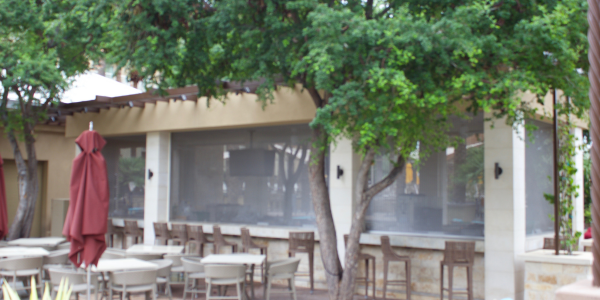Customer satisfaction is at the core of restaurant design. Restaurants can have a killer menu, but if the ambience is off, there’s a good chance that customers won’t return. We’ve listed some common design mistakes that can leave clients with a bad taste.
Unremarkable lighting.
Ambience is everything. Lighting isn’t just about being able to see; it's about curating an extraordinary dining environment that transforms each visit into a memorable occasion. The right lighting creates an emotional connection that keeps customers returning again and again.

The most successful restaurant designs use layered lighting to create a warm and inviting vibe:
-
Ambient lighting is the main source of light in restaurants, with a mix of natural light and fixtures. It can make spaces look bigger or taller, improve visibility, and set the overall mood.
-
Task lighting provides focused light for tasks, like cooking, counting money, or reading. It can be an overhead spotlight, fluorescent lighting, or a table lamp.
-
Accent lighting draws attention to architectural features, menu boards, and other areas of interest.
Lack of flow.
Restaurants are fast-paced, and it's important to have an efficient traffic flow to keep things running smoothly. If the layout is wrong, it can cause jams that frustrate customers, servers, and staff, elevating anxiety and stress levels. Flow is more than front-of-house operations, it should be incorporated in your whole design. Space is money and the inefficient use of space can reduce a restaurant's efficiency. From storage to room separation to table placement—you’ll need to take everything into consideration to plan an effective layout.
-
Plan your layout from the back of the house to the front of the house. This ensures that food can flow smoothly from the kitchen to the dining room.
-
Design areas for different activities. For example, have a separate area for ordering, seating, and picking up food.
-
Use clear signage to direct customers and staff. This prevents confusion and traffic jams.
-
Consider using a one-way traffic flow. This tactic helps to reduce congestion, making it easier for customers to find their seats.
-
Use space efficiently. Poorly designed storage, prep, service, kitchen, storage, and POS stations can slow down service and make it harder to serve customers. This means less customers can be served each night, affecting how much money the restaurant pulls in.
Poorly designed service areas.
Service areas aren’t pretty, especially when a restaurant gets busy. Trash cans pile up, bus pans sit full of used glasses and dinnerware, and kitchens get cluttered. These stations can be a bit confusing when it comes to design. While service stations are necessary, if they’re poorly designed, they can actually hamper service or look like a real eyesore. The mistake that most designers make is putting service stations on the backburner. Solidify their design and position at the beginning of the planning process instead of in the layout phase.

-
Make sure to have the right amount of service stations. Your design should include enough service stations to match the size of the restaurant, and they should be spread evenly throughout the space. Generally, one service station should be sufficient for every 22 seats.
-
Location is key. A well-designed service station takes traffic flow, kitchen and table access into consideration. A popular solution among designers is to disguise service stations by building them behind 4 1⁄2 - to 5-feet-walls, allowing servers to see the dining room without the station being obtrusive to customers.
-
Try a counter door or grille. A counter door or grille works to section off service areas. These products create an attractive barrier and double as a security solution after hours
Inadequate curb appeal.
A restaurant’s exterior is the first thing that people see, so it needs to be eye-catching and memorable. If the exterior design isn’t polished, the restaurant could lose business. A thoughtfully planned exterior will make customers curious, drawing them in. It can also help to set a restaurant apart from its competitors, making it more welcoming, and helping it stand out from the crowd.

-
Use high-quality materials. In restaurant design, glass has traditionally been used to showcase elegance, but most restaurants actually consider it a low-grade material, especially for private dining versus quick-service dining. Glass entrances also take a lot of upkeep. They need to be kept spotless to maintain the interior's class and appeal. For an upscale, fine-dining restaurant, you can use wooden doors with small windows. For an industrial theme, you can use rolling steel doors.
-
Spend on impact. Spend your budget on items that make the biggest impact. Invest in exterior lighting that matches the restaurant's mood, bright colors for casual dining and warm and dim for a more intimate vibe. Add signage and awnings, and a standout exterior paint color.
Restaurant design is important for customer satisfaction and business success. Avoid common pitfalls like poor lighting, inefficient traffic flow, and uninviting exteriors. Use layered lighting, thoughtful layout planning, and high-quality materials to create a harmonious and memorable dining experience.



